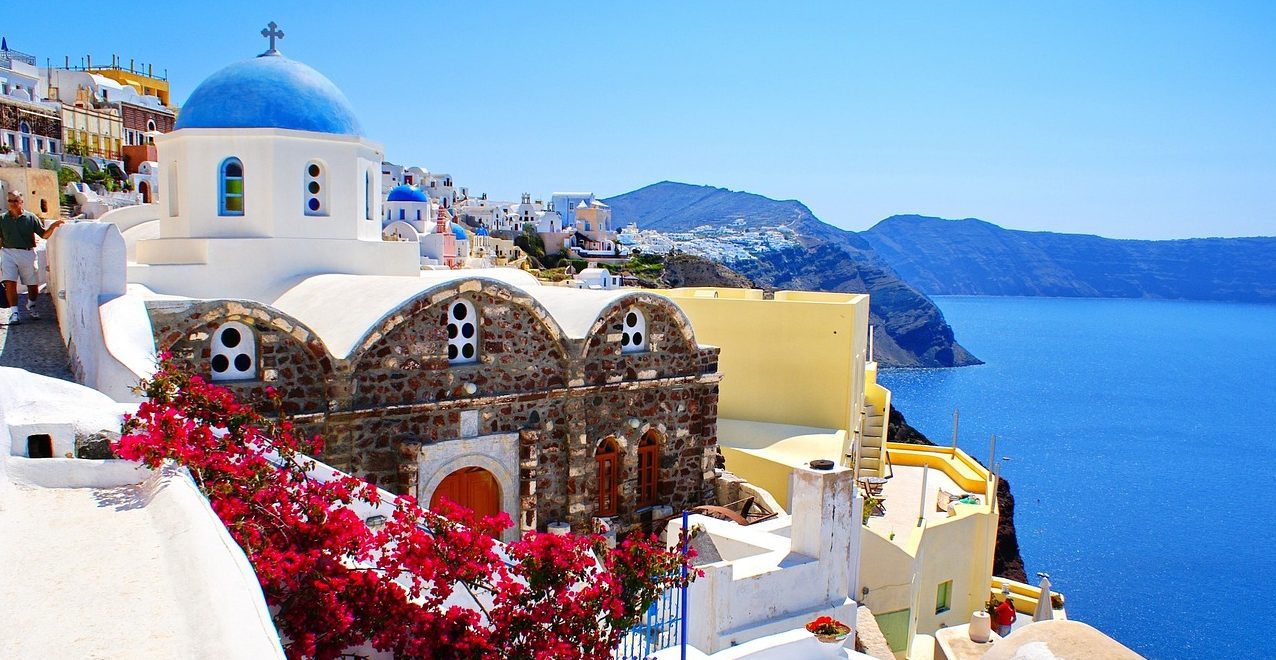Santorini holds a long and rich history, which has been sculpted by its strategic location in the Aegean Sea for thousands of years, as various civilisations have settled and made trade routes through it. To illustrate this rich history, there are many museums located around the island’s villages, dedicated to all aspects of life that have impacted the inhabitants throughout the ages. If you wish to deepen your knowledge of the island and learn more general Greek history, then the museums are excellent places to visit. They are typically open from 08:00-15:00, and some days (often Tuesdays) they are closed.
Prehistoric Thira Museum
One of the most popular museums is this one, taking you through a tour of the prehistoric and ancient history of Santorini by its Greek name ‘Thira’. Located in the capital town of Fira, the museum is split into 4 sections, with displays of the history of Thira, the geology of Thira, the Cycladic era cultural artefacts, and the many finds from the excavation site at Akrotiri- including the stunning frescoes that were uncovered. Among the artefacts found throughout the museum are pottery, jewels, tools, marble figurines and fossils of native flora and fauna, giving us a valuable insight into the cultural evolution through the ages. It is recommended to visit the museum after having visited the Akrotiri excavation site to have some context for the items in the exhibitions.
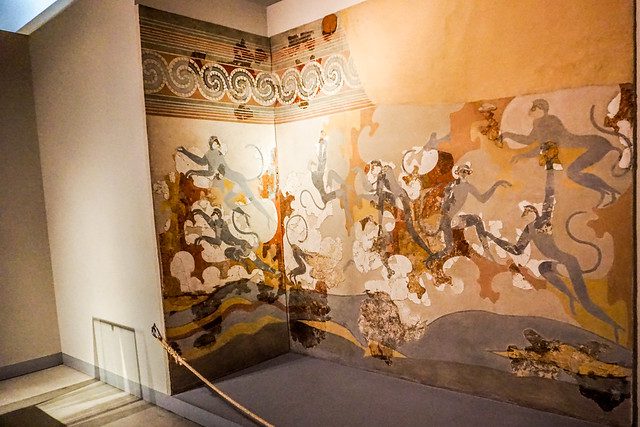
Archaeological Museum
Considered by some to be an extension of the Prehistoric Museum, with a greater focus on the ancient history of the island, as opposed to the prehistoric. Also located in Fira, the museum is close to the exit of the cable car, right in the town centre. It is split into 3 sections: Sculpture from the Archaic to the Roman period, Inscriptions from the Archaic to the Roman period, as well as pottery and clay figurines from the Geometric to Hellenistic period. Many of the artefacts on display include ceramics, figurines and amphorae, as well as statues and Attic black figurines. Many of these findings come from the Mesa Vouno settlement dating from the Hellenistic period.
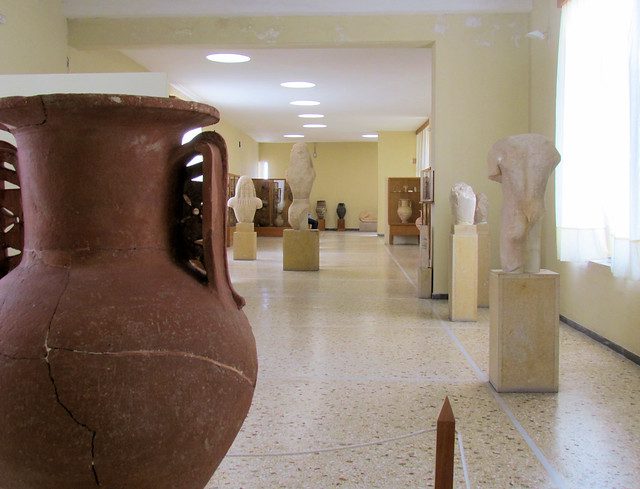
Naval Maritime Museum
The importance of the maritime trade on the history of the island cannot be underestimated, as being a small landmass, its economy was largely supplied by the fruits of the sea. It has been an important part of the Greek Navy, with a large fleet being based there. The museum is dedicated to this part of Santorini’s history, located in the village of Oia in a beautiful, old, captain’s house. The ground floor is dedicated to the tools and equipment used in the evolution of nautical technology from the years of common usage. On the first floor are many examples of old ship models, uniforms and chests, portraits and photographs of sailing families and prominent captains.
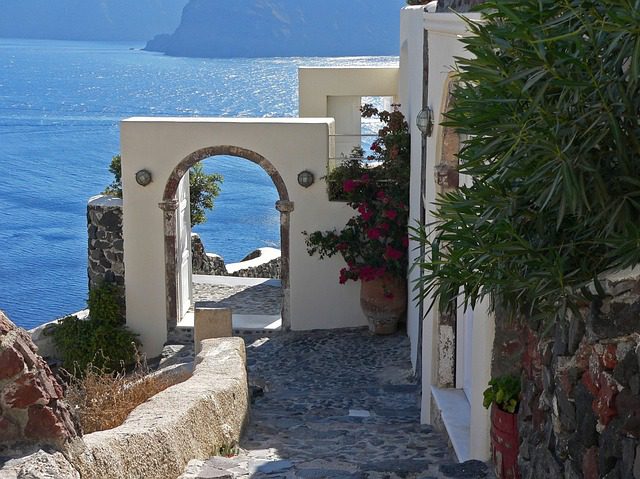
Lignos Folklore Museum
Just outside of Fira, on the way to Oia, is the small village Kontochori, where this Folklore Museum is situated. Located inside an old ‘cave house’ which dates from 1861, it managed to survive the 1956 earthquake in an excellent state and was renovated to create a series of authentic exhibitions, demonstrating the antique furniture, utensils and heirlooms of the past in its collection. The theme of the museum is the traditional domestic life of Santorini’s people in the early 20th century. Each room holds traditional objects, as well as the outdoor domestic winery and chapel dedicated to Saints Constantine and Helen. This is the perfect way to peer into the window of time, speaking to the everyday life of the Islanders. It is open Mon-Fri 10:00 am-16:00 pm.
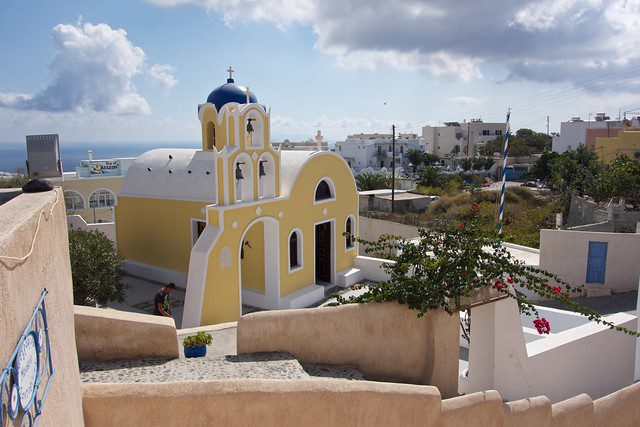
Koutsogiannopoulos Wine Museum
On the road to Kamari beach, in Vothonas, is the Wine Museum, adjacent to the ‘Volcan Wines’ vineyard. The displays are situated 8 metres underground and cover a total of 300 metres, ample for you to learn the rich history of winemaking on Santorini. You go on a deep tour, with audio support, through the ages and the development of technologies around grape cultivation and harvesting. You will see artefacts, mobile wax models, photos and old newspaper cutting, all with something to inform you about the islands wine history. There is also a special documentary about the inhabitants and their wine production effort from 1500 BC. The tour ends with the tasting of a number of fantastic local wines. On Fridays, there are also celebrations with wine, dancing and live music, which visitors are welcome to take part in.

Museum of Icons and Ecclesiastical Relics
In the village of Pyrgos is an old church of the Holy Trinity, a renovated chapel that was once a Catholic convent. The valuable ecclesiastical artefacts were saved after the earthquake rendered the church unusable, and the building was renovated. Now it holds all these artefacts on display, as an exhibit for the public to learn about the history of Santorini and its rich, ecclesiastical presence. Many of the icons date back 3 or 4 centuries ago, including the 16th-century icon of St George. There are also a number of antique objects relating to local crafts, such as the making of shoes, candlesticks, wine and local food processing.
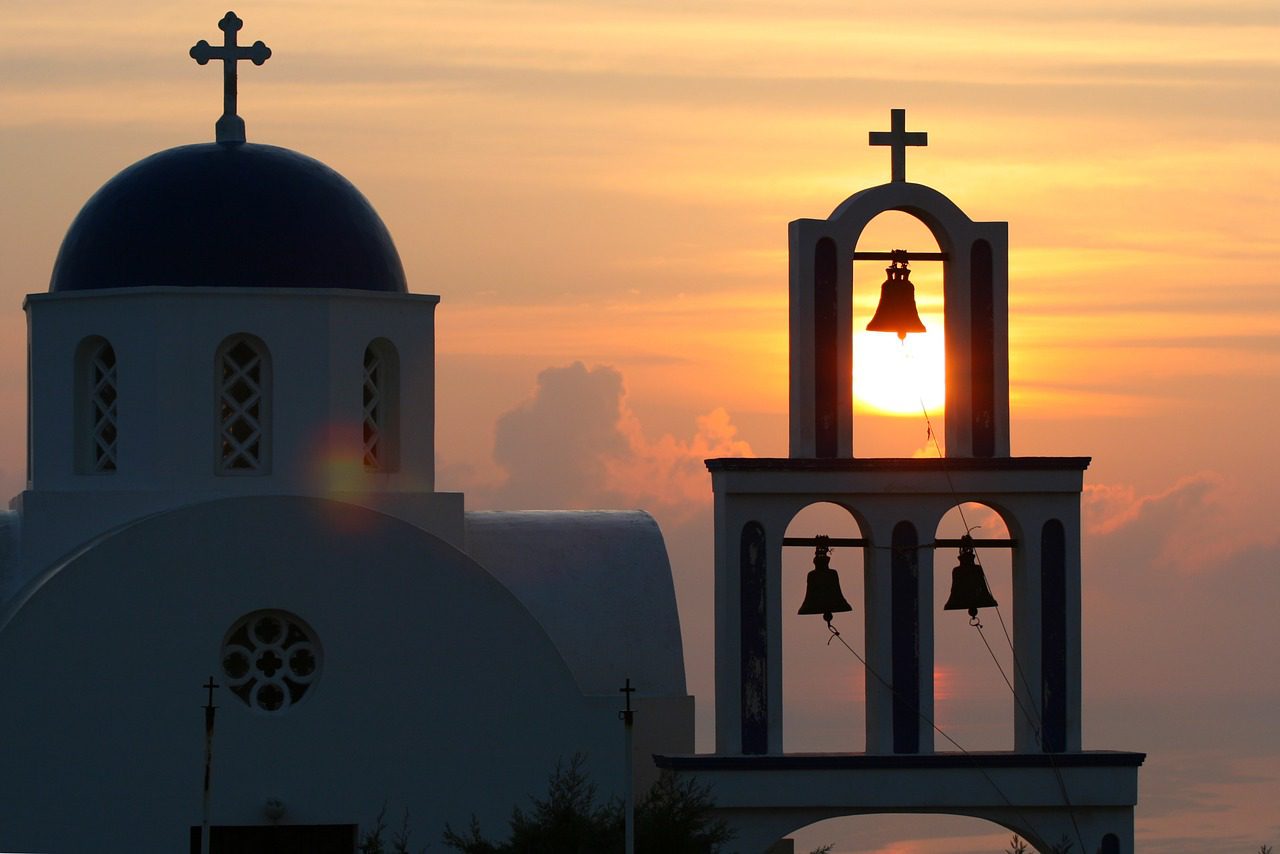
Ecclesiastical and Folklore Museum
Also located in Pyrgos, in the Monastery of the Prophet Ilias, is the Ecclesiastical and Folklore Museum. Including exhibitions such as icons, hagiographies, religious texts and ancient manuscripts, it also holds the Archbishop Gregorios’ diamond encrusted golden tiara. There are also a range of artefacts related to folklife and folklore included in the exhibit. Throughout the island, there is always something new to learn about its rich culture and past.
![]()
